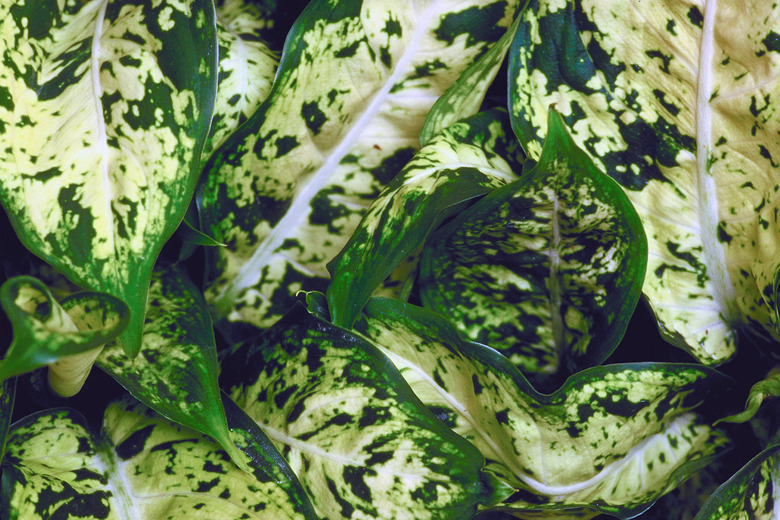Why Does A Dieffenbachia Leaf Drip?
The dieffenbachia, or dumbcane, is a vigorously growing, tropical evergreen plant that is often found in the indoor environment. It produces large, thick leaves that are often variegated with stripes or spots. The dieffenbachia can reach heights up to 6 feet with foliage blades as long as 18 inches and can easily exceed these averages in ideal environments. A drought-tolerant tree, the dieffenbachia is intolerant to wet feet and overwatering and will attempt to correct its watering issues with leaf drips.
Guttation
Guttation is a physical reaction that the dieffenbachia experiences after consistent overwatering. When the dieffenbachia is consistently overwatered, its roots begin to absorb more water than it is able to process. The buildup of water is excreted through the margins of the dieffenbachia's foliage in sap form.
Control
Excess water, as well as low amounts of light, promotes the development of guttation. To control and prevent guttation, reduce the dieffenbachia's water intake and increase its sunlight and air circulation. Place the dieffenbachia in a warm, sunny location that provides a full day's sunlight. Be sure that the location is well-ventilated and away from drafty locations.
Water
Allow the dieffenbachia's soil to dry slightly. Irrigate the dieffenbachia deeply, at soil level, when the soil becomes dry to the touch. Pour the water until it flows from the container's drainage holes and then allow the soil to dry out again before its next irrigation. Continue this irrigation schedule to prevent overwatering the dieffenbachia.
Care
Repot the dieffenbachia as the plant becomes root bound in its growing container, or about every one to two growing seasons. Replant the dieffenbachia in a loamy, well-drained soil environment. Feed with a well-balanced fertilizer regularly throughout the growing season, from early spring through late fall. Allow an indoor dieffenbachia to spend some time outdoors during the growing season to promote healthy cell development and increase air circulation during the hot, dry months.
